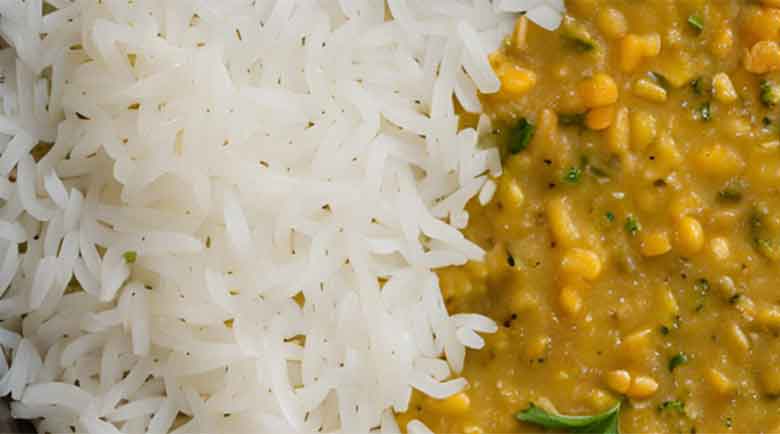Dal-Bhat Centers: Chhattisgarh government provides ₹52 per plate
Raipur | Correspondent: Chief Minister Vishnudev Sai has announced the launch of Annapurna Dal-Bhat Centers for workers in every district of Chhattisgarh. These centers aim to provide affordable meals, but questions loom over the source of the rice supply required for the program.
This initiative is not new.
Similar programs have been introduced in the past, with varying levels of success. In 2017, then-Chief Minister Raman Singh unveiled the Pandit Deendayal Upadhyay Shram Anna Yojana during a labor conference that celebrated his government’s 5,000 days in office.
This scheme promised full meals to workers for just Rs 5. The government released Rs 50 crore to support the initiative.
20 Years of Dal-Bhat Kendra
Dal-Bhat Centers in Chhattisgarh date back to 2004, introduced by Raman Singh’s administration to provide affordable meals to workers and the poor in five rupees. These centers quickly became popular, and Singh’s government was widely praised for its focus on food security for the marginalized.
The scheme initially provided meals for Rs 5, with the government supplying rice to the self-help groups running the centers. Over time, the prices of meals increased, but the centers continued to operate. By 2019, meals such as dal-rice were available for Rs 10, dal-rice with vegetable for Rs 15, and dal-rice with pickle and papad for Rs 20. In some locations, a larger meal with two vegetables was available for Rs 30.
However, in 2019, the program faced a major setback.
The central government stopped providing rice, citing a new policy that restricted rice supplies to government institutions only. This decision led to the closure of many centers, as the state was unable to sustain the program without the central rice allocation.
Political Fallout Over Rice Supply
The central government’s decision to cut rice supplies in 2019 created a political storm.
The timing was particularly sensitive, as the code of conduct for the Lok Sabha elections was in place, further complicating the situation. The Chhattisgarh government, led by Chief Minister Bhupesh Baghel at the time, heavily criticized the move. Baghel took to social media, accusing Prime Minister Narendra Modi of neglecting Chhattisgarh’s poor.
He tweeted, “In 2014, as soon as Narendra Modi became the Prime Minister, he first stopped the bonus for farmers, and now he has refused to supply rice for the Dal-Bhat centers. Chhattisgarhis are simple, but they are not weak. The people of this state will respond to this anti-Chhattisgarh mentality by defeating Narendra Modi’s party.”
Raman Singh, on the other hand, shifted the blame back to the state government, questioning why the state could not arrange rice independently if the central supply had stopped. He commented, “The central government has only stopped the rice supply. Can’t the state government arrange it? This reflects the poor financial management of the government.”
Chief Minister Bhupesh Baghel responded by writing a formal letter to Union Consumer Affairs, Food, and Public Distribution Minister Ram Vilas Paswan on April 3, 2019.
In the letter, Baghel expressed concern over the halt of rice supplies not only to the Dal-Bhat centers but also to 471 accredited institutions that received rice through the central scheme.
He urged the central government to reconsider its decision, but the request was denied.
New Efforts
Despite the collapse of the Dal-Bhat Centers in 2019, Chief Minister Vishnudev Sai has now announced a renewed push to open these centers in every district.
On September 17, Sai confirmed that the Annapurna Dal-Bhat Centers will be set up, promising affordable meals for workers. This announcement comes amidst concerns about how the rice supply will be managed, given the central government’s previous refusal to provide support.
Interestingly, while Sai’s new initiative makes headlines, Chhattisgarh has not entirely been without such centers. According to Labor Minister Lakhan Lal Devangan, 21 Dal-Bhat Centers have been operating under the Shahid Veer Narayan Singh Shram Anna Yojana.
These centers are run by a private company contracted by the state government, with the Labor Department overseeing the program. The state government pays Rs 52 per plate to the operators of these centers, indicating a substantial investment in food security.

